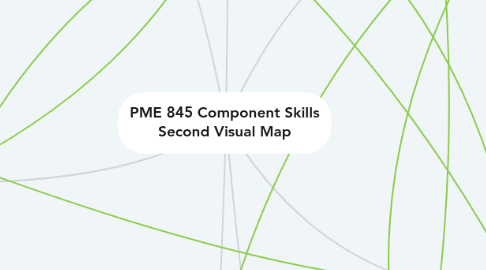
1. Fluency
1.1. Rasinski & Samuels (2011) stated that “research is suggesting that reading fluency is an important issue beyond the primary grades for a significant number of students and that it needs to be taught in the intermediate, middle, and secondary years” (p 98).
1.1.1. Rasinski & Samuels (2011) sum it up well when they state that “when fluency is viewed as that critical link from phonics to comprehension, when it is defined as simultaneous automaticity, prosody, and comprehension in reading, and when it is taught in ways that reflect authentic, real-life reading” (p 111).
1.2. Reading competency is not just reading each word on the page, but it is built off of fluency which occurs when the reading understands, recognizes and makes connections not to just each individual word, but to their reading as a whole.
1.2.1. Repeated Reading
1.2.2. Performance Reading
1.3. Modelling
1.4. Assisted Reading
1.5. Practice Wide and Deep
1.6. Phrasing words into meaningful groups
1.7. Synergy to make whole greater
2. Vocabulary
2.1. There is a significance of understanding your student and having a constant awareness of vocabulary level is essential in the promotion of vocabulary development.
2.2. The ability for the educator to scaffold on the student’s prior knowledge. Being able to scaffold on their vocabulary means that although “simplistic vocabulary may be appropriate for initial instruction, as a support for students’ understanding of a new concept, [however] once students develop a basic understanding, it is time to elevate our instructional language to enhance our students’ vocabularies” (Lane, 2010, p368).
2.3. Using word sort
2.4. Avoiding Dumbing Down Language
2.5. Modelling vocabulary use
3. Morphology
3.1. The development of morphology is crucial in language development. As Kirby & Bowers (2012) state, “[a]lthough many children develop considerable morphological awareness on their own, explicit instruction is much more likely to result in extensive, accurate and generalizable morphological awareness” (p 3), and therefor as educators, it is our role to ensure that we are including instruction of this skill into our practice
3.2. Affix and Base words
3.2.1. Affix - prefix and suffix
3.2.2. PQRST
3.2.2.1. Prefix
3.2.2.2. Queen Root
3.2.2.3. Suffix
3.2.2.4. Total
3.3. Word Detectives
3.4. Colour Cards
3.5. Word Banks
4. Phonological Processing and Decoding
4.1. Having letter sound knowledge and phonological awareness, as well as phonemic awareness all stem from an exposure to vast amounts of oral language,
4.2. With a lack of knowledge or prior exposure to varying the aspects of literacy mentioned, students will have difficulty in phonological processing and phonemic awareness
4.3. 4 ways to read:
4.3.1. sight = decoding, phonological recording
4.3.1.1. spelling, pronunciation and meaning, memory, requires sufficient prior exposure, great for foreign language learners
4.3.2. Process = analogy and prediction from context
4.3.2.1. Unfamiliar and can be misleading for some
4.4. Stages of Literacy
4.4.1. 0 Foundation
4.4.2. 1 Beginning
4.4.3. 2 Fluency/Consolidation
4.4.4. 3 Literacy for Growth
5. Language Development
5.1. what we are able to teach children when it comes to reading depends on the oral language skills that they developed prior to that time
6. Writing
6.1. Cognitive Model and SRSD
6.1.1. Both methods are broken down into stages or writing development. SRSD into six and Cognitive model of Learning to Write into three.
6.1.2. In the Cognitive Model planning stage, there is a focus on generating, organizing and goal setting (Mayer, 2008), while in the SRSD method there is also a focus on setting goals, planning and organizing (What is SRSD?”)
6.1.3. Both instructional methods have a focus on the process over the product.
6.1.4. Both are evidence-based writing practices
6.2. Planning - generating info from memory
6.3. Translating - written plan - avoid constraints
6.3.1. graphic
6.3.2. Syntactic
6.3.3. semantic
6.3.4. textual
6.3.5. contextual
6.4. Reviewing
6.4.1. Reading and editing
